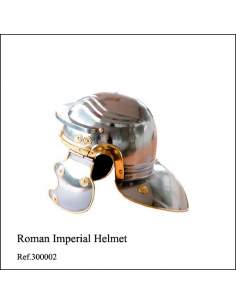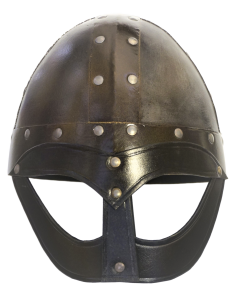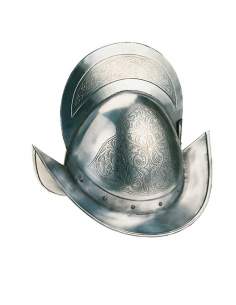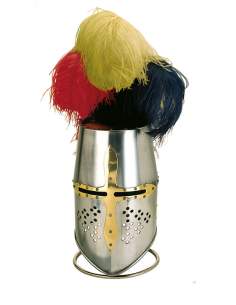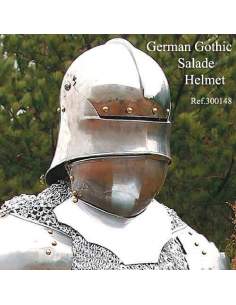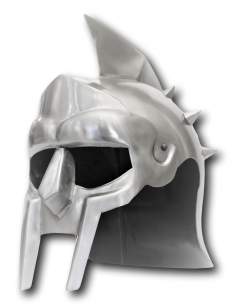Free shipping throughout Spain. International shipments to the whole world.
PERSONALIZED attention every day from 09:00 to 21:00
Helmets
Helmets and Heads
A battle helmet is, as we can imagine, a type of armor intended to protect the head. It was a must-have item for a soldier and they carried it even on occasions when they were not wearing other parts of their armor. The reason is obvious, a simple blow to the head could be enough to cause immediate death. So even the poorest soldiers, who could not afford other parts of armor, always tried to have at least a helmet to protect their head.
Helmet types
Greek cases
Greek helmets usually protected only the top of the head and part of the face, leaving the neck open. Although in later versions they did also cover the head and neck.
Roman helmets
Roman helmets normally had plumes and earflaps, although there were versions without these parts. Some types of Roman helmets, such as gladiator helmets, had nasal protection and could even carry masks.
Viking helmets
We normally imagine Viking helmets with horns, but this is a historical inaccuracy originating in Romanticism during the 19th century, in which a Swedish painter decided to illustrate these warriors with the famous horned helmets, with the intention of demonizing them. Viking helmets did not have this striking part, for a very simple reason, they would be so uncomfortable that they would not be practical at all. The Vikings, as great warriors, knew well the value of comfort during combat. Their helmets usually had nose protection, visor and, sometimes, earmuffs.
Medieval helmets
The Middle Ages is probably the time in which we find the greatest variety of helmets. In general, we can say that most of them used to cover both the entire head and the neck, leaving only some openings for the eyes and mouth, which were sometimes tiny and greatly limited not only ventilation, but also sight.
Medieval helmets varied in design and style depending on the era, region, and purpose for which they were worn. However, in general, medieval helmets were characterized by being durable, protective and effective.
Some of the most common medieval helmet designs include:
• Nose helmet: This type of helmet had a metal nose that protected the warrior's face, and was often decorated with crests, feathers, and other decorations.
• Closed helmet: This type of helmet completely covered the warrior's head and face, with openings for the eyes, nose, and mouth. It was heavy and offered excellent protection.
• Conical helmet: This medieval helmet had a conical shape and was mainly used in the early period of the Middle Ages. Often, it had a crest or ornament on top.
• Ring helmet: This type of helmet was made of metal rings and covered the head and neck of the warrior. It was very flexible and allowed a great range of motion.
• Chainmail Helmet: This helmet was made entirely of chainmail and covered the entire head and neck of the warrior. It offered excellent protection against bumps and cuts, but was quite heavy.
These are just a few examples of the many medieval helmet designs that existed. Each had its own unique characteristics and was used in different combat situations, depending on the personal preferences of the warrior and the tactical needs of the time.
Conqueror helmets
These helmets usually covered only the top part of the head, since due to the heat and humidity so characteristic of the territories through which they moved, that is, the New World, it was exhausting to wear a helmet with complete protection of the head and the neck.
Asian helmets
This type of helmet, also known as kabuto, with its spectacular shape, protected the entire head without exception and, in addition, the neck, throat and face of the soldier. The Kabuto was made from steel or leather plates riveted together.
In this category we offer you to discover the curious world of old towns, perfect for a faithful recreation of a historical event or a film. Roman helmets, Greek, medieval and Viking helmets are waiting for you here.

